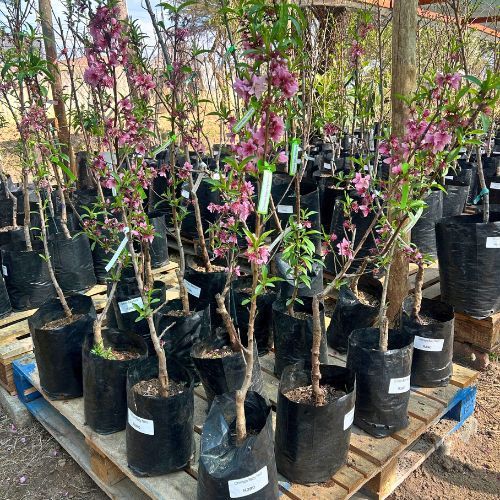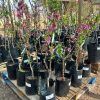Position
Plant the tree in a location that receives full sun, meaning at least 6 to 8 hours of direct sunlight daily. Good sunlight helps the tree produce more fruit and ensures better fruit quality.
If planting more than one tree, space the trees about 2 to 3m apart.
Container Growing: Choose a pot at least 55cm, but the larger the better
Soil
The tree prefers well-draining soil. Loamy soil with good drainage is ideal. Avoid heavy clay or sandy soil.
For optimal growth, a slightly acidic to neutral soil pH, ideally between 6.0 and 7.0, is best.
Watering
Keep the soil consistently moist but not waterlogged. Water the tree deeply every week during the growing season, adjusting based on rainfall and soil moisture.
Ensure proper drainage to prevent root rot. If grown in a container, ensure the pot has drainage holes.
Mulching
Use 2 to 5 centimetres of pine bark mulch to protect the roots from UV damage and drying out. The mulch retains moisture and maintains an optimal pH. Do not let the mulch touch the plant stem, as it may cause infection or rot.
Fertilising
Use a balanced, slow-release fertiliser designed for fruit trees. Organic options like compost or well-aged manure can also be beneficial.
Fertilise in early spring as new growth begins and again in mid-summer. Alternatively, apply our slow-release (berry fertiliser)all-plant fertiliser. Apply one teaspoon every 4-5 months. The roots will absorb what they need.
Pruning
Prune the tree in late winter or early spring before new growth starts. Remove dead or diseased branches and thin the canopy to improve air circulation and light penetration.
Aim to maintain an open center structure to allow sunlight to reach all parts of the tree and to improve fruit quality.
Pest and Disease Management
Nectarines can be susceptible to diseases such as peach leaf curl and brown rot. Use organic products to control as needed and practice good garden hygiene by removing fallen fruit from the soil beneath the tree.
Agricultural Neem Oil or Effective Microorganisms (EM Control ) will assist in either prevention or after the fact. If you already have aphids or mites, wash the tree with a harsh hosing, and when dry, spray with Neem oil or EM Control. Nectarine trees need regular spraying before the onset of fruit and immediately after buds turn to small fruit. Continue organic spraying regularly for good-quality peaches.
Thinning Fruit
Thin fruit in early summer when they are about the size of a small coin to promote larger, healthier fruit and prevent branch breakage due to excessive weight.
Harvesting
Crimson Baby nectarines are usually ready to harvest in late summer. They should come off the tree easily when gently twisted.








